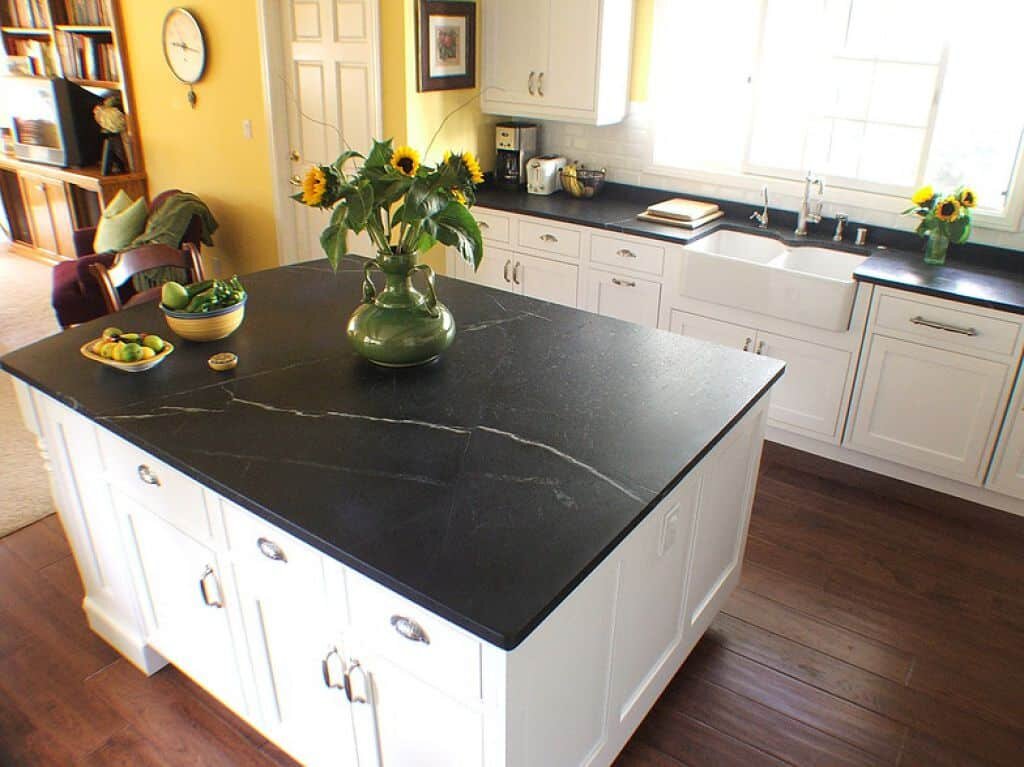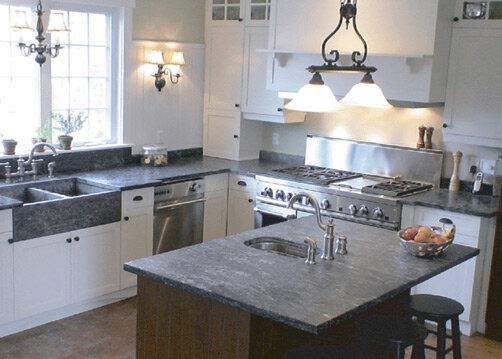Soapstone
Soapstone is often used as an alternative natural stone countertop instead of granite or marble. In laboratories it is unaffected by acids and alkalis. In kitchens it is not stained or altered by tomatoes, wine, vinegar, grape juice, and other common food items. Soapstone is unaffected by heat. Hot pots can be placed directly on it without fear of melting, burning, or other damage.
Soapstone is a soft rock, and it is easily scratched in countertop use. However, a gentle sanding and treatment with mineral oil will easily remove shallow scratches. Soapstone is not suitable for use as a workbench top where it will receive rough treatment and where sharp or abrasive objects will be placed upon it.
1) Can you put hot pans on soapstone?
Soapstone is both chemical resistant and heat resistant, so you can set hot pots and pans directly on soapstone without risk of cracking or scorching. Soapstone is much softer and more prone to scratching than granite or quartz however, so preparing food directly on your soapstone counters could easily scratch it.
2) Does soapstone need to be sealed?
We do not recommend sealing soapstone. Sealers are intended to seal porous stone like marble and granite which can stain. Soapstone is a very dense, nonporous stone which does not need to be sealed.
3) Is soapstone a good choice for kitchen countertops?
Soapstone is also very durable, and some soapstone sinks and countertops made in the 1800s are still in use today. Because it is a soft stone, it is more pliable and much more resistant to cracking than other countertop materials. Another benefit of soapstone is its heat resistance.
4) What do you seal soapstone with?
Soapstone surfaces need not be sealed, but we recommend treatment with mineral oil if consistent surface darkening is desired. Without
treatment, soapstone will darken in uneven regions around surface areas most frequently used.
5) Where is Soapstone Used?
The special properties of soapstone make it suitable, or the material of choice, for a wide variety of uses. A number of examples of soapstone use are explained below and in the photograph captions on this page.
Countertops in kitchens and laboratories
Woodstoves
Wall tiles and floor tiles
Facing stone
Bed warmers
Marking pencils
Molds for metal casting
Cold stones
Sinks
Cooking pots, cooking slabs, boiling stones
Bowls and plates
Cemetery markers
Electrical panels
Ornamental carvings and sculptures
Fireplace liners and hearths




